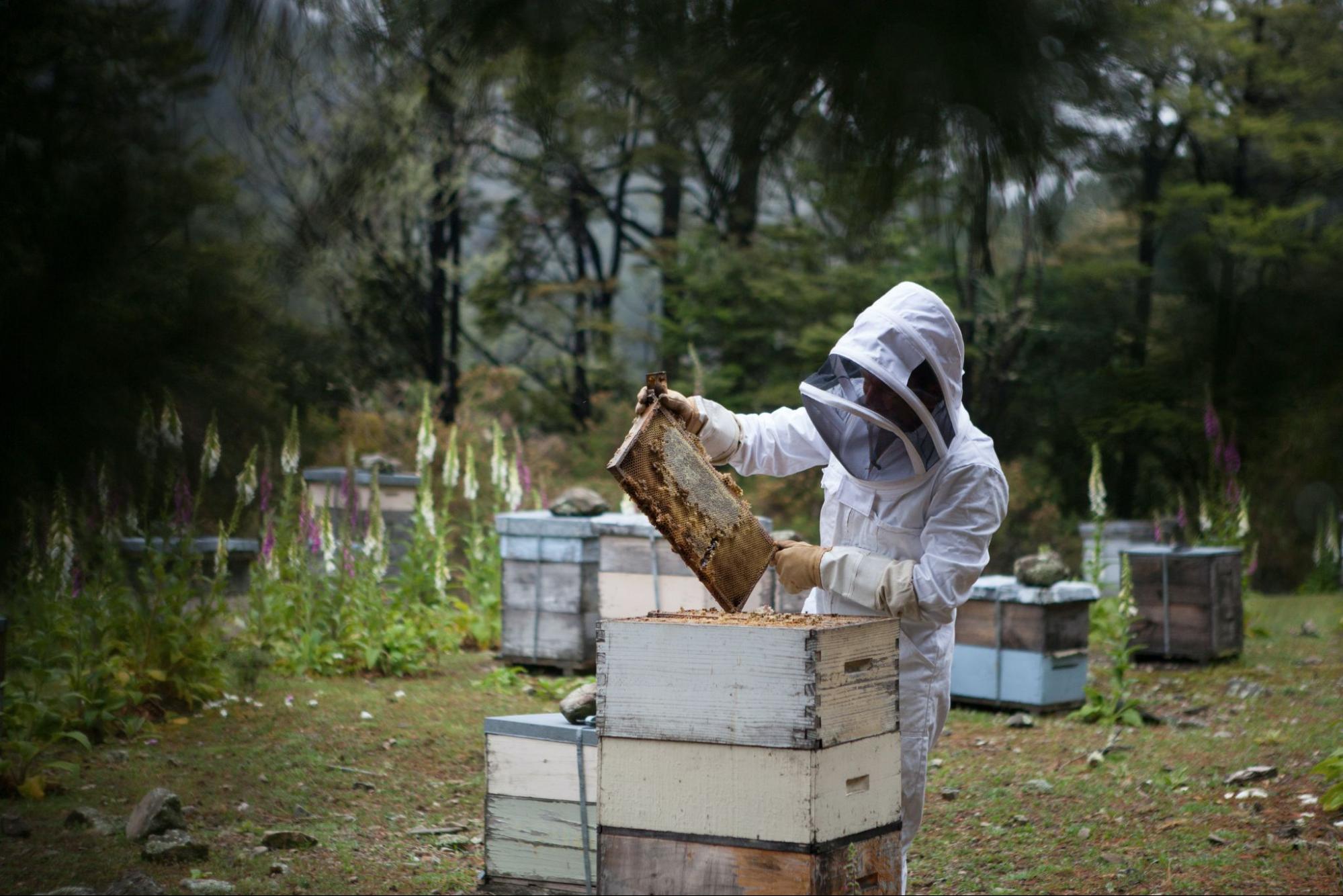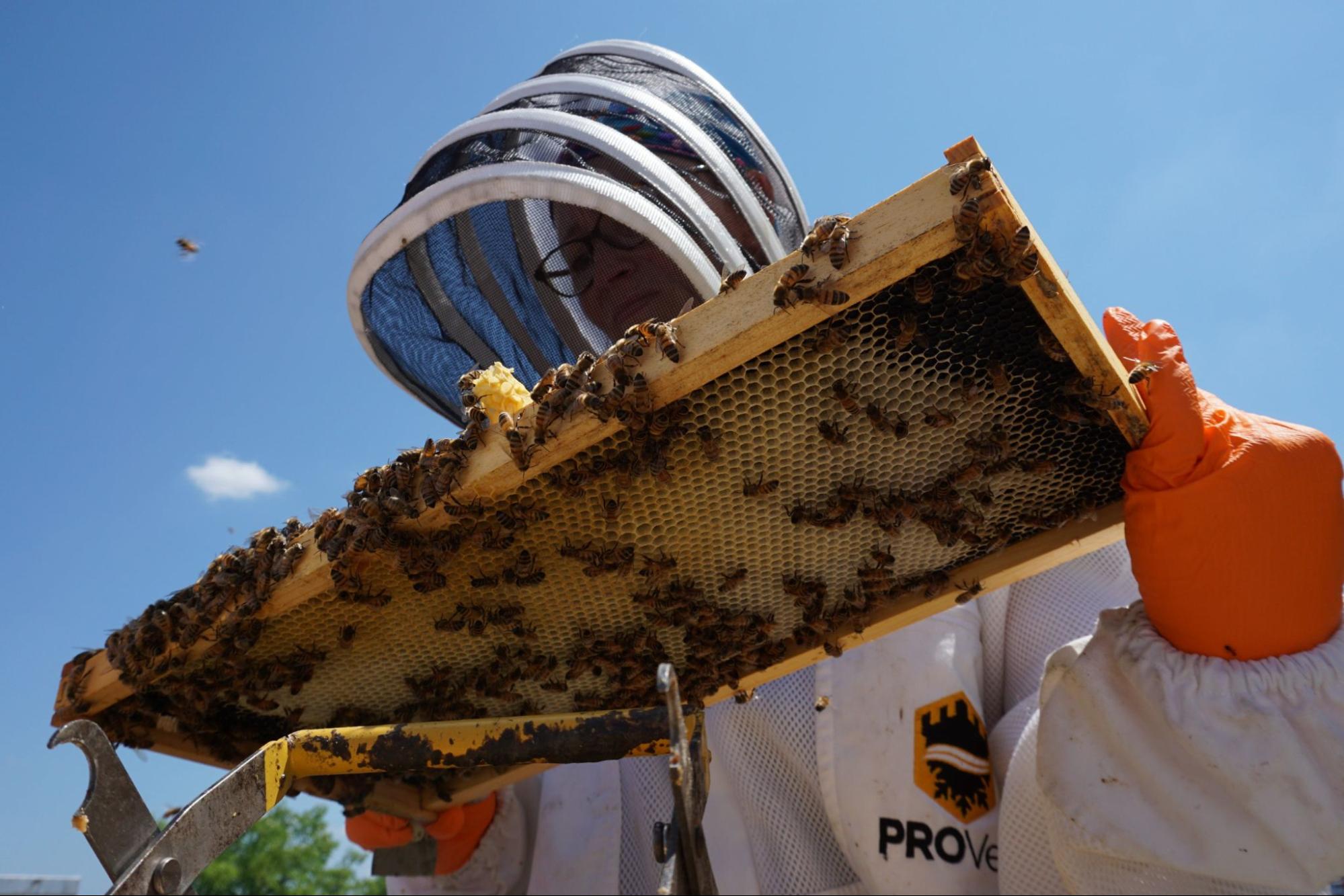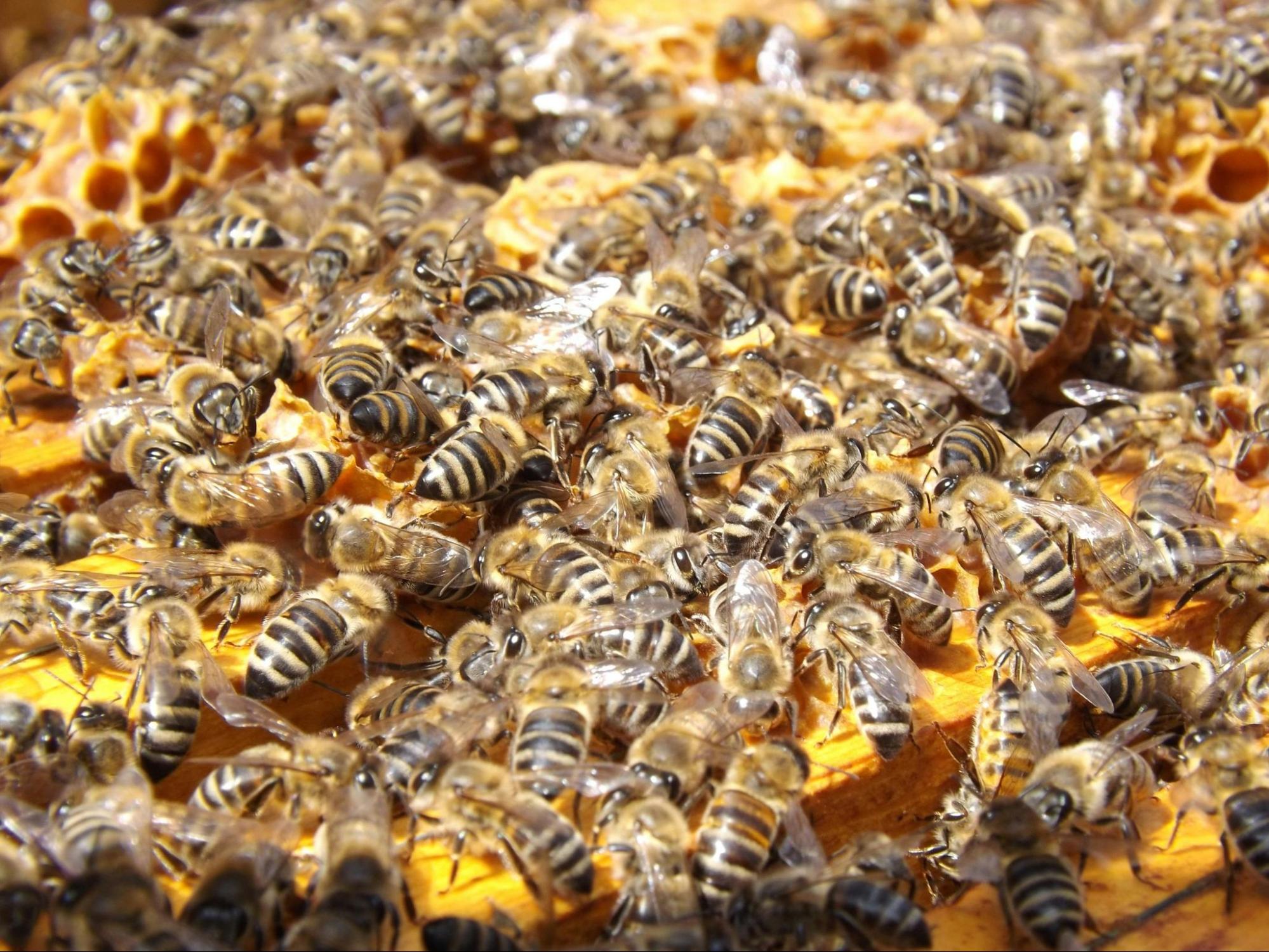How To Get Rid of Hive Beetles
No one wants to find beetles in their home, including your honey bees. A hive beetle infestation can prove disastrous for your colony. It’s important to keep your colony strong so they can ward off these pests or diseases that threaten the hive.
Fortunately, there are several things you can do to prevent or exterminate hive beetles. Help your honey bees fend off this threat with our guide on how to get rid of hive beetles in your apiary.
What Are Hive Beetles?
Despite their small size, hive beetles can quickly bring a colony to its knees if you don’t deal with them. Adult hive beetles lay their eggs within the hive. When these eggs hatch, the larvae begin feasting on the hive’s resources.
Hive beetle larvae will also eat the honey bee brood and eggs, dealing a serious blow to the colony’s population. This destruction puts your honey bees under a lot of stress and can lead to lower populations and resources for your colony.
Equip yourself with the following strategies to maintain the health of your colony and repel these unwelcome guests.
Practice Proper Hive Maintenance

As with many honey bee pests and diseases, prevention is the best treatment for hive beetles. A strong colony with a thriving population will have an easier time chasing out hive beetles and preventing an infestation.
You can help your colony succeed by keeping an eye out for signs of pests and diseases, practicing good colony hygiene, and ensuring your honey bees have plenty of resources to fend for themselves.
Remove Unnecessary Honey Supers
When hive beetles invade a colony, the adult honey bees will do their best to chase them out. Give your honey bees a hand by removing unnecessary honey supers. This will reduce the amount of territory your honey bees need to cover and make it easier for them to catch and drive out the hive beetles.
If removing a super that’s not ready for harvest is necessary, consider placing it with a stronger colony. Just remember to be cautious not to spread hive beetles from one colony to another. If the super is infested, freezing it can kill off any remaining hive beetles, eggs, or beetle larvae before you move it to a new colony.
Make the Hive Less Inviting
Knowing how to get rid of hive beetles includes making your hives inhospitable for them. Hive beetles don’t like sunlight, so try placing your hive bodies somewhere that receives full sunlight for at least part of the day.
Maintain your hives well by removing any cracked or rotten frames or boxes, as these create good hiding places for hive beetles. You can find hive beetle traps and repellants at Mann Lake to keep these pests away from your honey bees.
Use Beetle Traps
Sometimes, traditional methods of cleaning and prevention are not enough to halt the advance of the hive beetles, and a more direct method is required. In such instances, beetle traps can prove to be a potent weapon. Beetle traps operate on the principle of “attract and trap.” They are designed to imitate the environmental conditions that hive beetles are attracted to and are equipped with secure chambers to trap the beetles once they are lured in.
Beetle traps are also user-friendly, making them a preferred hive tool in the beekeeper's arsenal against beetles. They can be easily inserted and removed from the hives causing minimal disturbance to your colony.
Select Chemical Treatments
When faced with a burgeoning hive beetle population, chemical treatments can become an imperative part of your hive management. These chemical treatments can swiftly reduce the hive beetle population, breaking their lifecycle and preventing further reproduction.
However, chemical treatments are potent. So, be sure to use treatments that are approved and designed for beehives to ensure the safety of your bee colony. The chemicals used, while safe for bees when used correctly, need to be carefully administered following the instructions provided.
Any negligence can have adverse effects on your colony. Chemical treatments are only recommended when all other methods prove insufficient.
Freeze the Infested Hive Frames
Once you identify an infestation on a frame, removing and freezing it for a period of 24 to 48 hours can be an effective strategy. The freezing process kills both the adult and the small hive beetle larvae, halting their lifecycle abruptly. While simple, this method can significantly disrupt the proliferation of beetles within your colony.
The freezing method isn't a set-and-forget solution—it requires follow-up actions. Once a frame is clear of beetles, assess the situation and take steps to prevent a future hive beetle infestation. This might involve a thorough check of other frames, introduction of beetle traps, and ensuring a clean and well-maintained hive.
Proactive Measures for Hive Beetle Prevention
Combatting a hive beetle infestation begins with the age-old adage: prevention is better than cure. Implementing preventive measures in your daily beekeeping routine can drastically reduce the chances of a hive beetle outbreak.
Frequent Hive Inspections

One of the cornerstone practices of effective beekeeping and hive beetle prevention is the undertaking of regular and thorough hive inspections. Through these inspections, you can ensure that you are aware of the state of your hive and can spot the early indicators of trouble.
Small changes in the bees' behavior, the appearance of unfamiliar larvae, or the sighting of adult hive beetles can all indicate the beginnings of an infestation. Catching these signs early can enable you to act fast and stop the infestation from spreading further.
Maintain Bee Health
A colony of healthy bees serves as an innate defense mechanism against hive beetles. Adult bees are quite effective at managing small numbers of hive beetles by themselves. They can chase, confine, and limit the reproduction of the beetles.
However, for them to do this, they need to be in good health. Ensuring that the bees have enough resources, are not stressed, and are not suffering from diseases is a key factor in maintaining a strong and thriving colony. Therefore, the routine health checks of your bees should not be sidelined in your preventive measures.
Optimize Feeding Practices
Feeding your bees correctly can surprisingly play a significant role in warding off hive beetles. An abundance of unconsumed food can quickly attract these unwanted guests. Therefore, it's important to supply only what your bees can consume in a short period.
Refrain from leaving feed out in the open since it can easily attract hive beetles while also providing them with a valuable resource.
Ensure Correct Placement of Hives
The choice of where you place your hives can greatly impact the likelihood of a beetle infestation. Hive beetles prefer shadows and hideaways, while they are not particularly fond of sunlit spots.
Therefore, arranging your hives in a bee yard with areas that are exposed to sunlight for at least part of the day aids in naturally deterring beetles from your colonies.
Clean and Maintain the Hive
A clean and well-kept hive is also a significant tool for keeping hive beetles at bay. Hive beetles are likely to lay their eggs in cracks and crevices. That’s why older or damaged frames or boxes can be an invitation for them.
Regular rotation and thorough cleaning of frames and boxes can eliminate these potential breeding spots. Essentially, a clean hive can be a significant roadblock in the lifecycle of a hive beetle.
Use Beetle Repellents
The use of hive beetle repellents can serve as a further preventive measure. Essential oil mixtures, which you can apply directly to the hive, have shown effectiveness in keeping hive beetles away.
A broad range of commercially available beetle traps can also be incorporated into your hives to isolate and terminate any beetles that happen to venture into your territory. These tools, when combined with other preventive measures, can bolster your defense and help maintain a hive beetle-free apiary.
Tips for the Healthy Growth of Your Colony

Cultivating a thriving honey bee colony is key to fighting off invaders like the hive beetles. Here are valuable tips to foster healthy growth and strengthen your colony's defense.
Balancing Colony Strength and Size
Ensure your colony's population aligns with available resources to avoid overcrowding or underutilization. Both of these can expose your bees to potential threats, including beetles.
Ensuring Adequate Resources
Provide consistent access to nutritious food sources for your bees. During periods of natural scarcity, consider supplemental feeding to keep your bees strong and ready to resist pest invasions.
Managing the Queen Bee
Proactively monitor the health of your queen bee, as a robust queen contributes to a strong hive. Don't hesitate to replace an underperforming queen to maintain hive efficiency.
Addressing Diseases Proactively
Regularly monitor your hives for potential diseases and take immediate action at the first signs to prevent widespread colony impact.
Preventing Swarming
Swarming can weaken your hive and make it vulnerable to pests. Conduct regular hive inspections for signs of potential swarming and apply preventive measures like creating splits or adding new boxes.

